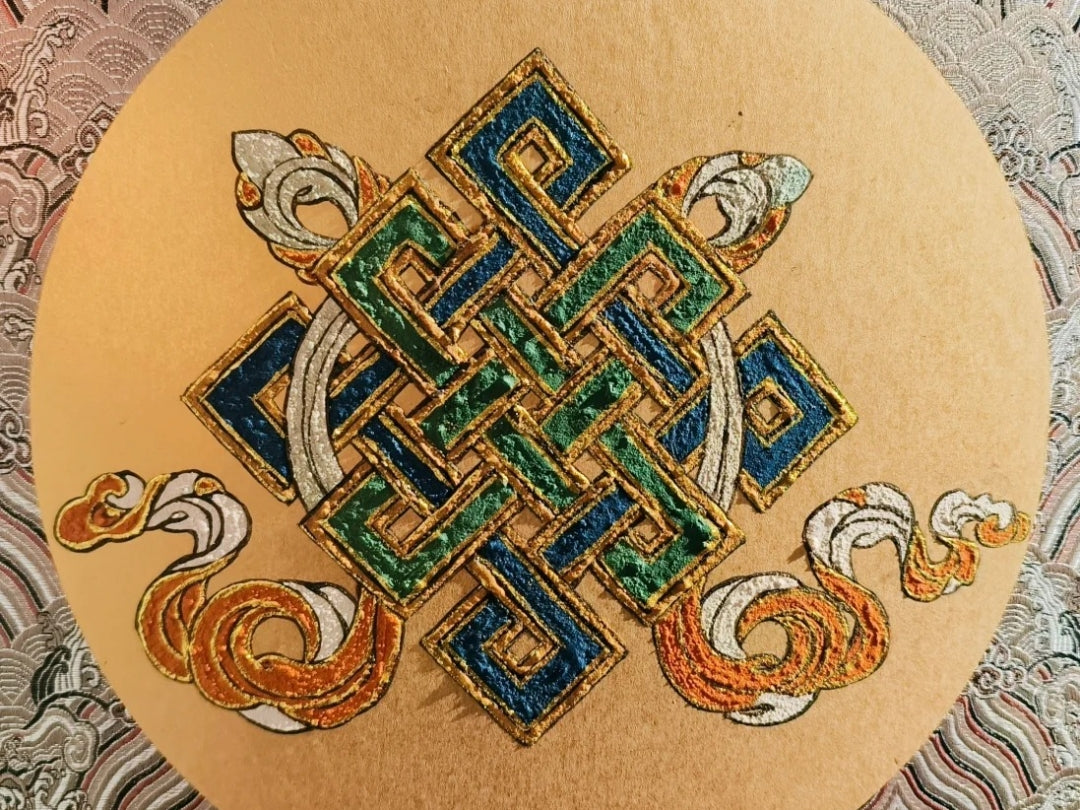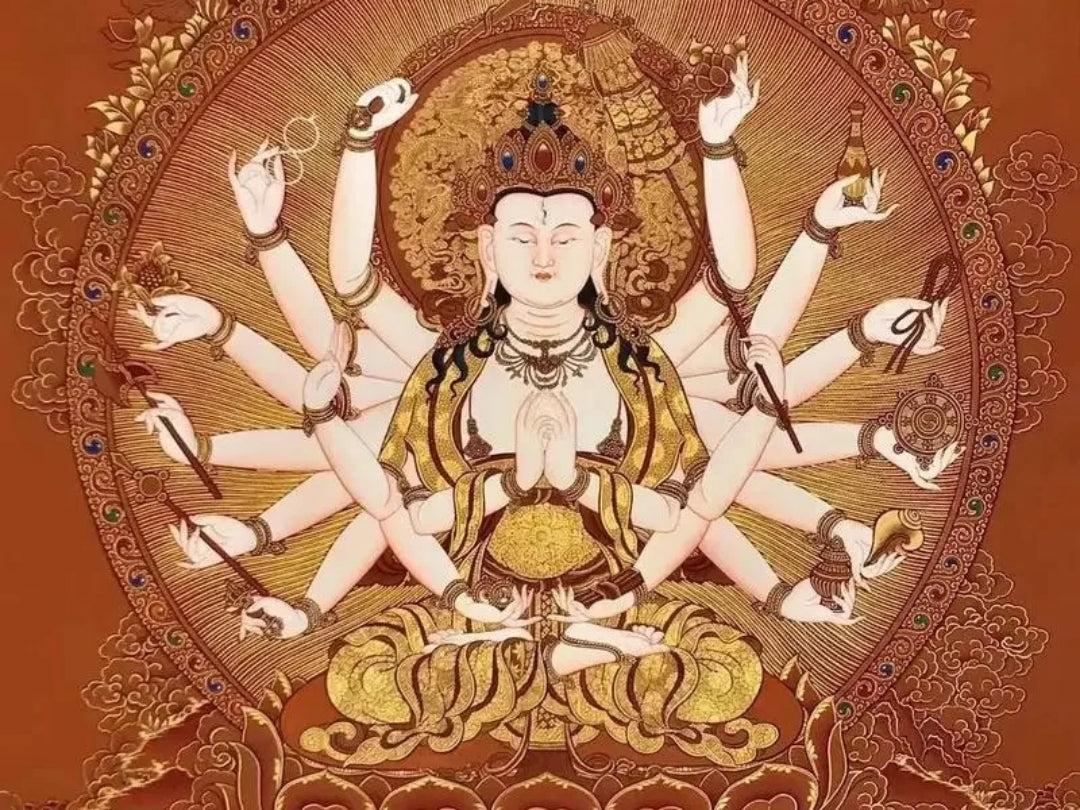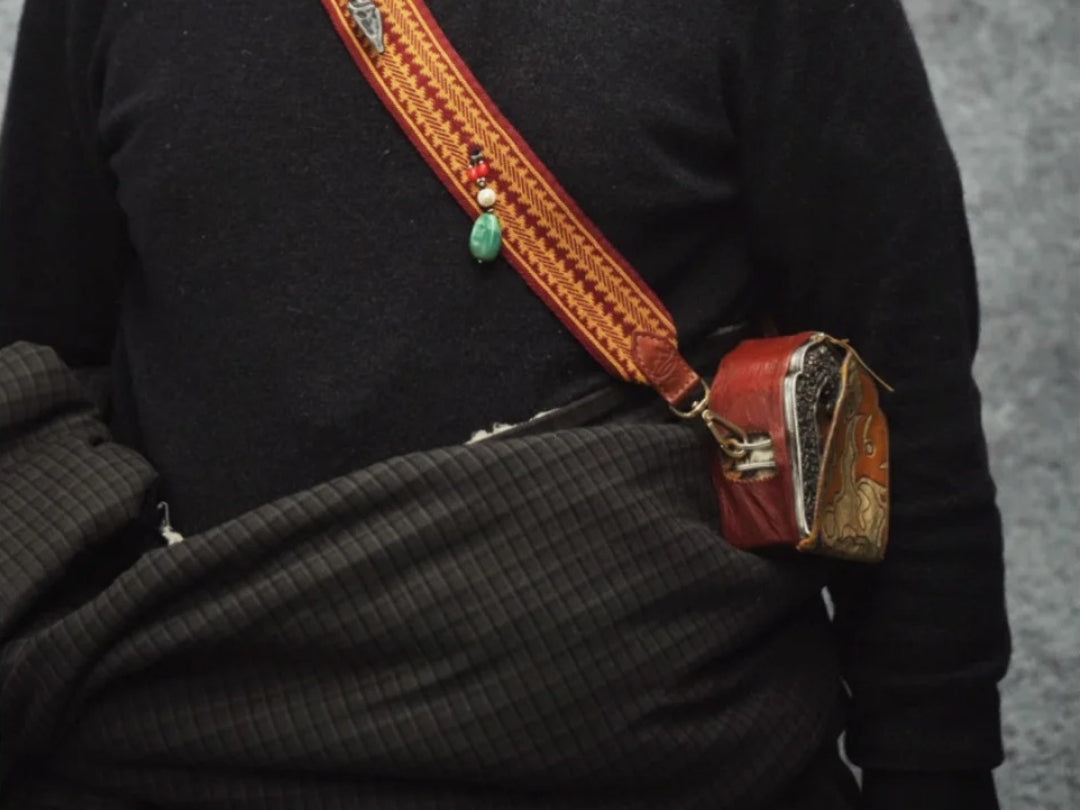Tibet, known for its rich history and mysterious customs, is one of the world's most fascinating cultures. Tibetan art and daily life are steeped in spiritual symbols, many of which carry deep meanings. From ancient inscriptions to modern Buddhist Jewelry, these symbols reflect a profound connection between Tibetan people and their spirituality. Let’s explore some of Tibet's most iconic symbols and their significance.
卍: Symbol of Eternity
The symbol 卍, known as “Yungdrung” in Tibetan, represents the sun and symbolizes eternity and stability. It is important to clarify that this is not the swastika associated with Nazi ideology, but rather an ancient and universal symbol deeply rooted in Tibetan Buddhism and other cultures. In Tibet, the 卍 is revered as a lucky charm and a representation of harmony.
The 卍 is found on temples, homes, and traditional attire, embodying the Tibetan people's pursuit of spiritual balance. On Mount Kailash, often referred to as the “center of the world,” a natural ice formation resembling 卍 stands as a breathtaking spectacle, further highlighting its spiritual significance.

The Heavenly Ladder: A Path to Paradise
While traveling in Tibet, one might notice ladder-shaped murals on steep mountain cliffs. These symbols, known as "heavenly ladders," represent a spiritual path for souls to ascend to paradise.
This belief stems from the legend of Tibet’s first king, Nyatri Tsenpo, and the six kings that followed him, collectively called the “Seven Heavenly Kings.” According to folklore, these kings were celestial beings who returned to the heavens upon their death, with rainbows serving as their divine rope and mountain cliffs as their ladder. Today, the heavenly ladder symbolizes the Tibetan people's hope for eternal connection to the divine.

The Endless Knot: Interconnectedness and Harmony
The Endless Knot, one of the Eight Auspicious Symbols in Tibetan Buddhism, is among the most frequently used motifs in Tibetan culture. It represents the eternal cycle of life, endless wisdom, and the interconnectedness of all existence.
From intricately embroidered designs on door curtains to delicate Buddhist Jewelry, the Endless Knot is a constant reminder of the harmony between the physical and spiritual realms. Temples, homes, and personal belongings often feature this beautiful and meaningful symbol.

The Six-Syllable Mantra: Om Mani Padme Hum
Walking through the streets of Lhasa or the sacred Barkhor Street, one often hears the chant of “Om Mani Padme Hum.” This six-syllable mantra is deeply ingrained in Tibetan spiritual life. Engraved on Buddhist Jewelry, prayer flags, and Mani stones, it serves as a powerful tool for meditation and spiritual cleansing.
Believers hold that reciting this mantra helps eliminate six major afflictions—desire, anger, ignorance, pride, jealousy, and greed—thereby paving the way for liberation and enlightenment. Its widespread presence makes it one of Tibet’s most revered symbols of protection and peace.

The Ten Divine Symbols: Shielding from Misfortune
The Ten Divine Symbols are a set of sacred motifs often depicted in Tibetan Buddhist art, including Thangka paintings and talismans. These symbols are believed to protect individuals from various calamities, including natural disasters, epidemics, and conflicts.

Found on temple gates, walls, and even Buddhist Jewelry, the Ten Divine Symbols signify blessings for a harmonious life, physical and mental health, and the fulfillment of one’s aspirations. Their presence reinforces the idea of a divinely guided existence.

Tibetan Symbols and Their Influence on Buddhist Jewelry
These sacred symbols, from the 卍 to the Endless Knot, have transcended their traditional roots to become popular motifs in Buddhist Jewelry. Such pieces not only carry deep spiritual significance but also serve as personal talismans for protection, wisdom, and good fortune.
Whether adorning a Thangka pendant necklace or etched onto prayer beads, these symbols connect wearers to Tibetan culture and spirituality. They are a testament to the timeless power of Tibetan artistry and belief.
Conclusion
Tibetan symbols are more than decorative elements; they embody profound spiritual teachings and cultural heritage. Their presence in temples, homes, and Buddhist Jewelry reflects a society deeply connected to its spiritual roots. Exploring these symbols offers a glimpse into the rich and mystical world of Tibetan Buddhism.
By embracing these symbols in daily life, one not only celebrates their beauty but also connects with the timeless wisdom they represent.



